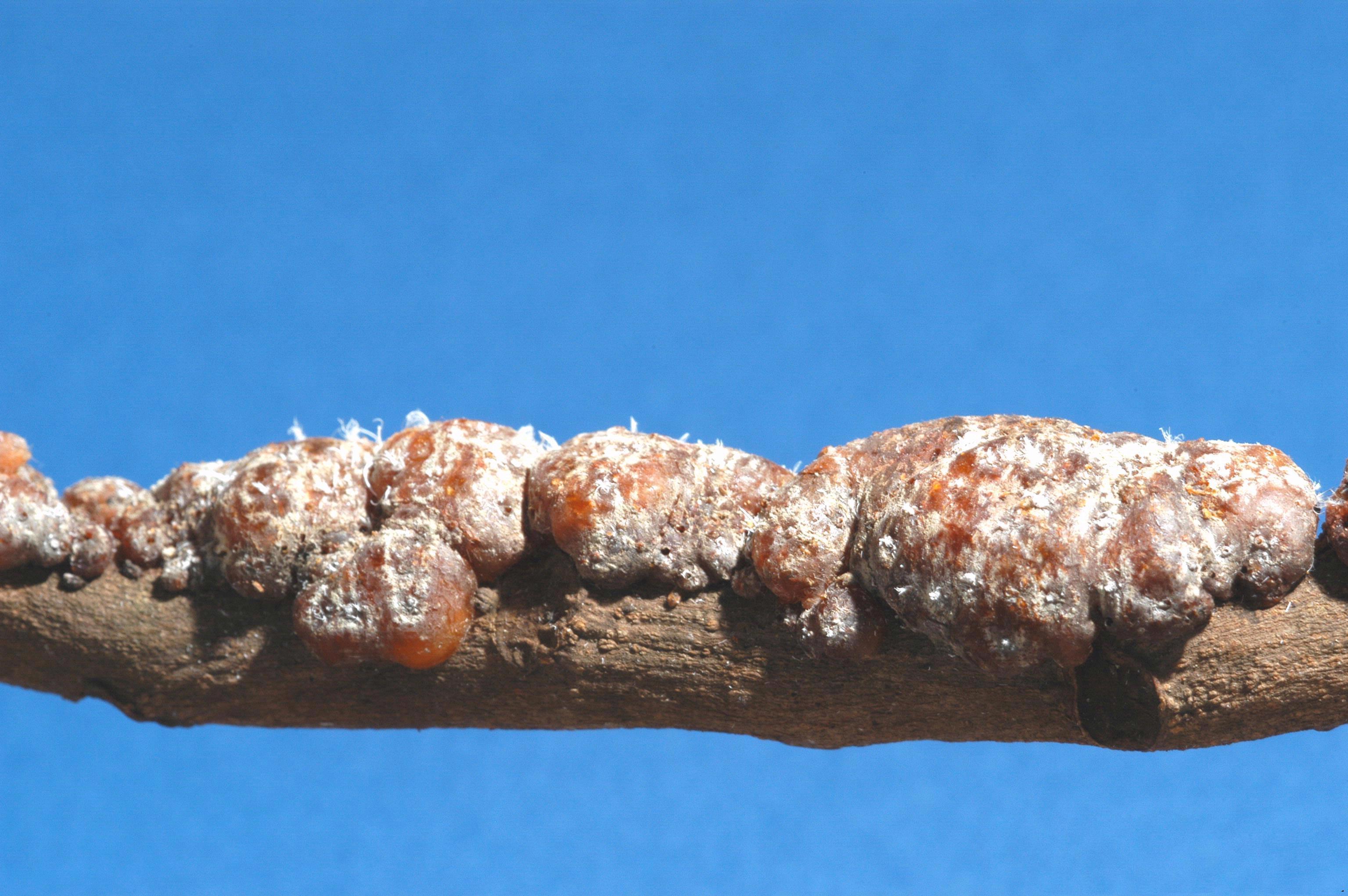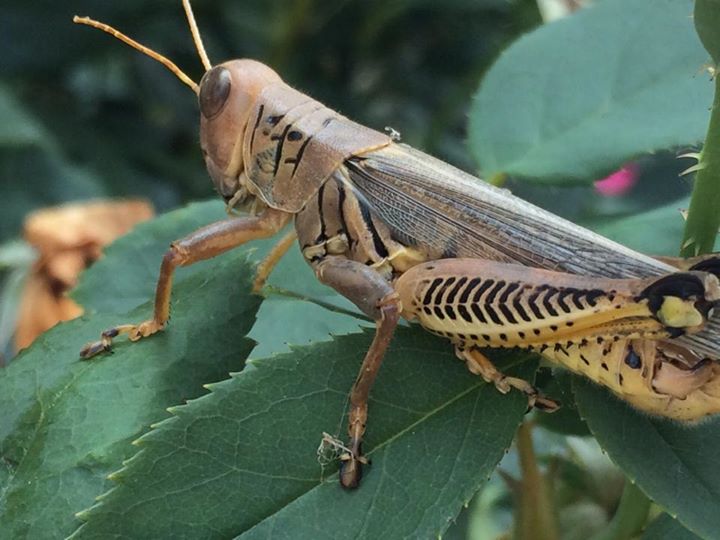|
Kerria Lacca
''Kerria lacca'' is a species of insect in the family Kerriidae, the lac insects. These are in the superfamily Coccoidea, the scale insects. This species is perhaps the most commercially important lac insect, being a main source of lac, a resin which can be refined into shellac and other products.Raman, A. (2014)Discovery of ''Kerria lacca'' (Insecta: Hemiptera: Coccoidea), the lac insect, in India in the late 18th century.''Current Science'' 106(6), 886. This insect is native to Asia.Ahmad, A., et al. (2012)Mouthparts and stylet penetration of the lac insect ''Kerria lacca'' (Kerr) (Hemiptera: Tachardiidae).''Arthropod Structure & Development'' 41, 435-441. Biology ''Kerria lacca'' produces a dye and a wax as natural secretions. The life cycle of this scale insect proceeds with the first instar of the larval stages, which are known as "crawlers". Larvae in this stage crawl along the branches of their host plants and feed on the phloem. As they pierce the branches to reach the phl ... [...More Info...] [...Related Items...] OR: [Wikipedia] [Google] [Baidu] |
Harold Maxwell-Lefroy
Harold Maxwell-Lefroy (20 January 1877 – 14 October 1925) was an English entomologist. He served as a Professor of Entomology at Imperial College London and as the second Imperial Entomologist to India. He left India after the death of two of his children from insect-borne diseases. He worked on applied entomology and initiated experiments on the use of chemicals to control insects. A formula he developed was utilized to save Westminster Hall from destruction by wood-boring beetles, while others were used to control lice in the trenches during the First World War. The success of his chemicals led to increased demand and the founding of Rentokil, a company for insecticide production. He was killed in an accident while experimenting on fumigants to control insects. Biography Maxwell-Lefroy was born in the village of Crondall, Hampshire, to Charles James Maxwell Lefroy of the 14th Hussars (whose grandfather was James Walker who had designed the Regent or Vauxhall Bridge in 1816) ... [...More Info...] [...Related Items...] OR: [Wikipedia] [Google] [Baidu] |
Schleichera Oleosa
''Schleichera'' is a monotypic genus of plants in the soapberry family, Sapindaceae. There is only one species, ''Schleichera oleosa'', a tree that occurs in the Indian Subcontinent and Southeast Asia. Species ''Schleichera oleosa'', kusum tree, Ceylon oak, lac tree, gum lac tree. It is a large deciduous (nearly evergreen) tree with a comparatively short fluted trunk and a shade spreading crown. It is frost and drought hardy and is subject to damage by grazing. It produces root-suckers freely, and it has good cropping power. The wood is very hard and reddish brown. This tree is noted for its growth of new leaves that are bright red. In India the growth of these bright red leaves happens around March. The leaves are pinnate, with each leaf having 2-4 leaflets. The tree is host to Kusumi Lac (Kerria lacca), a lac insect which is native to India. Its seeds are the source of Kusum oil. Flowers: The flowers are tiny and hardly noticeable, occurring in short dense yellow clusters. ... [...More Info...] [...Related Items...] OR: [Wikipedia] [Google] [Baidu] |
China
China, officially the People's Republic of China (PRC), is a country in East Asia. It is the world's most populous country, with a population exceeding 1.4 billion, slightly ahead of India. China spans the equivalent of five time zones and borders fourteen countries by land, the most of any country in the world, tied with Russia. Covering an area of approximately , it is the world's third largest country by total land area. The country consists of 22 provinces, five autonomous regions, four municipalities, and two Special Administrative Regions (Hong Kong and Macau). The national capital is Beijing, and the most populous city and financial center is Shanghai. Modern Chinese trace their origins to a cradle of civilization in the fertile basin of the Yellow River in the North China Plain. The semi-legendary Xia dynasty in the 21st century BCE and the well-attested Shang and Zhou dynasties developed a bureaucratic political system to serve hereditary monarchies, or dyna ... [...More Info...] [...Related Items...] OR: [Wikipedia] [Google] [Baidu] |
Kerria Yunnanensis
''Kerria yunnanensis'' is a species of scale insect Scale insects are small insects of the order Hemiptera, suborder Sternorrhyncha. Of dramatically variable appearance and extreme sexual dimorphism, they comprise the infraorder Coccomorpha which is considered a more convenient grouping than the ... found in China. Eleven different species of ants are known to feed on the honeydew ''K. yunnanensis'' produces. References Kerriidae Insects of China Insects described in 1990 {{Coccoidea-stub ... [...More Info...] [...Related Items...] OR: [Wikipedia] [Google] [Baidu] |
Hemolymph
Hemolymph, or haemolymph, is a fluid, analogous to the blood in vertebrates, that circulates in the interior of the arthropod (invertebrate) body, remaining in direct contact with the animal's tissues. It is composed of a fluid plasma in which hemolymph cells called hemocytes are suspended. In addition to hemocytes, the plasma also contains many chemicals. It is the major tissue type of the open circulatory system characteristic of arthropods (e.g. arachnids, crustaceans and insects). In addition, some non-arthropods such as molluscs possess a hemolymphatic circulatory system. Oxygen-transport systems were long thought unnecessary in insects, but ancestral and functional hemocyanin has been found in the hemolymph. Insect "blood" generally does not carry hemoglobin, although hemoglobin may be present in the tracheal system instead and play some role in respiration. Method of transport In the grasshopper, the closed portion of the system consists of tubular hearts and an aort ... [...More Info...] [...Related Items...] OR: [Wikipedia] [Google] [Baidu] |
Vietnam
Vietnam or Viet Nam ( vi, Việt Nam, ), officially the Socialist Republic of Vietnam,., group="n" is a country in Southeast Asia, at the eastern edge of mainland Southeast Asia, with an area of and population of 96 million, making it the world's sixteenth-most populous country. Vietnam borders China to the north, and Laos and Cambodia to the west. It shares maritime borders with Thailand through the Gulf of Thailand, and the Philippines, Indonesia, and Malaysia through the South China Sea. Its capital is Hanoi and its largest city is Ho Chi Minh City (commonly known as Saigon). Vietnam was inhabited by the Paleolithic age, with states established in the first millennium BC on the Red River Delta in modern-day northern Vietnam. The Han dynasty annexed Northern and Central Vietnam under Chinese rule from 111 BC, until the first dynasty emerged in 939. Successive monarchical dynasties absorbed Chinese influences through Confucianism and Buddhism, and expanded ... [...More Info...] [...Related Items...] OR: [Wikipedia] [Google] [Baidu] |
India
India, officially the Republic of India (Hindi: ), is a country in South Asia. It is the seventh-largest country by area, the second-most populous country, and the most populous democracy in the world. Bounded by the Indian Ocean on the south, the Arabian Sea on the southwest, and the Bay of Bengal on the southeast, it shares land borders with Pakistan to the west; China, Nepal, and Bhutan to the north; and Bangladesh and Myanmar to the east. In the Indian Ocean, India is in the vicinity of Sri Lanka and the Maldives; its Andaman and Nicobar Islands share a maritime border with Thailand, Myanmar, and Indonesia. Modern humans arrived on the Indian subcontinent from Africa no later than 55,000 years ago., "Y-Chromosome and Mt-DNA data support the colonization of South Asia by modern humans originating in Africa. ... Coalescence dates for most non-European populations average to between 73–55 ka.", "Modern human beings—''Homo sapiens''—originated in Africa. Then, int ... [...More Info...] [...Related Items...] OR: [Wikipedia] [Google] [Baidu] |
Holcocera Pulverea
''Holcocera'' is a gelechoid moth genus of the family Blastobasidae The Blastobasidae are a family of moths in the superfamily Gelechioidea. Its species can be found almost anywhere in the world, though in some places they are not native but introduced by humans. In some arrangements, these moths are included in t .... There are about 70 described species. Taxonomy The genera '' Hypatopa'' and '' Calosima'' are sometimes treated as synonyms of ''Holcocera''. Species *'' Holcocera aclydis'' *'' Holcocera adjutrix'' Meyrick, 1918 *'' Holcocera amicae'' *'' Holcocera amicitiae'' *'' Holcocera anomalella'' *'' Holcocera arcae'' *'' Holcocera audaciae'' *'' Holcocera aurorae'' *'' Holcocera basiplagata'' Walsingham, 1912 *'' Holcocera bucinae'' *'' Holcocera calthae'' *'' Holcocera cathedrae'' *'' Holcocera cerradicola'' *'' Holcocera chalcofrontella'' *'' Holcocera chloropeda'' Meyrick, 1922 *'' Holcocera coccivorella'' *'' Holcocera concolor'' *'' Holcocera crassicornella'' *'' ... [...More Info...] [...Related Items...] OR: [Wikipedia] [Google] [Baidu] |
Eublemma Roseonivia
''Eublemma'' is a genus of moths of the family Erebidae described by Jacob Hübner in 1829. Taxonomy The genus has previously been classified in the subfamily Eublemminae within Erebidae or in the subfamily Eustrotiinae of the family Noctuidae. Description Its palpi are upturned and reach just above the vertex of the head, and have a short third joint. The antennae are minutely ciliated in the male. Thorax and abdomen smoothly scaled. Legs short, tibia moderately hairy. Forewings with somewhat produced and depressed apex. Veins 6 and 7 from angle of cell and veins 8 to 10 stalked from before angle. Hindwings with veins 3,4 and 6,7 from angles of cell. Larva with two pairs of abdominal prolegs. Species In alphabetical order: *'' Eublemma acarodes'' Swinhoe, 1907 *'' Eublemma accedens'' (Felder & Rogenhofer, 1874) Burkina Faso, Gambia, Ghana, Nigeria, Saudi Arabia, Ethiopia, Kenya, Tanzania, Malawi, Zaire, Magagascar, Indo-Australian Tropics, Australia, New Caledonia, Fiji *'' E ... [...More Info...] [...Related Items...] OR: [Wikipedia] [Google] [Baidu] |
Coccophagus Tschirchii
''Coccophagus'' is a large genus of chalcid wasps belonging to the family Aphelinidae. Species Coccophagus contains the following species: * ''Coccophagus ablusus'' Annecke and Insley, 1974 * ''Coccophagus acanthosceles'' Waterston, 1916 * ''Coccophagus adumbratus'' Annecke and Insley, 1970 * ''Coccophagus adustus'' (Annecke and Prinsloo, 1976) * ''Coccophagus aethiopis'' Girault, 1935 * ''Coccophagus aethochreus'' Annecke and Insley, 1974 * ''Coccophagus afrangiatus'' Viggiani, 1994 * ''Coccophagus africanus'' Risbec, 1956 * ''Coccophagus albiapicella'' De Santis, 1996 * ''Coccophagus albicoxa'' Howard, 1911 * ''Coccophagus albifuniculatus'' (Huang, 1994) * ''Coccophagus amblydon'' Compere, 1937 * ''Coccophagus amoenus'' Hayat, 2015 * ''Coccophagus anchoroides'' (Huang, 1994) * ''Coccophagus angolensis'' Annecke and Insley, 1974 * ''Coccophagus anthracinus'' Compere, 1925 * ''Coccophagus apricus'' Annecke and Insley, 1970 * ''Coccophagus argenteus'' Girault, 1915 * ''Coccophagus ... [...More Info...] [...Related Items...] OR: [Wikipedia] [Google] [Baidu] |
Parasitoid Wasp
Parasitoid wasps are a large group of hymenopteran superfamilies, with all but the wood wasps (Orussoidea) being in the wasp-waisted Apocrita. As parasitoids, they lay their eggs on or in the bodies of other arthropods, sooner or later causing the death of these hosts. Different species specialise in hosts from different insect orders, most often Lepidoptera, though some select beetles, flies, or bugs; the spider wasps (Pompilidae) exclusively attack spiders. Parasitoid wasp species differ in which host life-stage they attack: eggs, larvae, pupae, or adults. They mainly follow one of two major strategies within parasitism: either they are endoparasitic, developing inside the host, and koinobiont, allowing the host to continue to feed, develop, and moult; or they are ectoparasitic, developing outside the host, and idiobiont, paralysing the host immediately. Some endoparasitic wasps of the superfamily Ichneumonoidea have a mutualistic relationship with polydnaviruses, the vir ... [...More Info...] [...Related Items...] OR: [Wikipedia] [Google] [Baidu] |




_(7686081848).jpg)